Bees are heralded as the only species to produce food consumed by humans, although they have a lot of other qualities. Unfortunately, some of these qualities also make them problematic.
Depending upon the species, they can be aggressive or even cause damage to your home. The worst part is that other stinging insects can be mistaken for bees. Let’s take a moment and discuss some effective ways to identify and get rid of bees safely.
Identifying Bees and Their Kin
When you see a flash of yellow, it’s easy to believe you have a bee, but the truth is that bees, hornets, and wasps all have similar appearances but different personalities. Even more important, some species are considered beneficial and may even be protected.
There are over 3,000 species of bee in the US alone and an estimated 25,000 worldwide. Together, pollinating bees are partially responsible for 33% of the food we consume. Here are the four most important types you’ve probably already heard of:
Africanized Bee
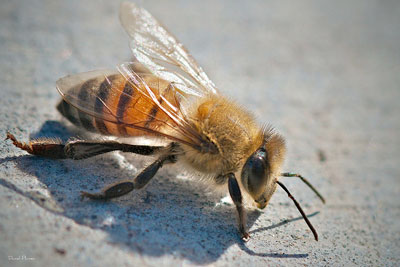
Known as the killer bee, these are a cross-breed of African and European species. The original goal was to breed a more robust species that was less vulnerable to disease. Slightly smaller than normal honey bees, they’re also more agile.
Beekeepers may get a larger honey harvest from these hybrids, but they’re also more temperamental and will defend their hive in large numbers, making them dangerous to the average person. The good news is that Africanized honey bees don’t fare well in colder climates, limiting their ability to spread to the northern states.
Bumble Bee

While they don’t make honey, the bumble bee is one of the most important pollinators in the wild. As they move from flower to flower in search of nectar, pollen collects in their thick thorax hair and their legs to be rubbed off at the next stop.
Bumble bees are generally peaceful unless threatened, and can sometimes be seen digging in the ground. About 40 species make their home in the US, two of which are on the brink of extinction. As bumble bee nests are temporary, it’s usually best to leave them untouched when possible. Getting rid of bumble bees should be a last resort.
Carpenter Bee
Not to be confused with carpenter ants, this species of solitary bee is often blamed for damaging wood. However, it prefers to make its burrow in rotting or hollow wood. On occasion, it may burrow into healthy soft wood. Carpenter bees prefer to go about their business, defending themselves only when necessary.
Honey Bee

Often confused with the more robust bumble bee, honey bees are vital to the ecosystem and are only just beginning to spring back from a dangerous decline. Their honey is an important food source for humans and other animals, while the wax is a versatile and valued commodity.
Honey bees are known to sting if they feel their nest is threatened and communicate with each other through a complex language of dance.
Less Famous Bees
There are a few important species of bee that you might not have heard of. Spotting these species can be a bit difficult, but chances are, you’ve seen them at some point and didn’t realize.
Mason and Leaf-Cutter Bee
Leafcutters and their close kin, mason bees, love to build solitary bee nests. You’ll often find a mason bee taking up residence in old mortar, while the leafcutter neatly cuts rounded pieces out of leaves.
Neither are aggressive, and the leafcutter bee doesn’t physically harm the plants it harvests from.
Mining Bee
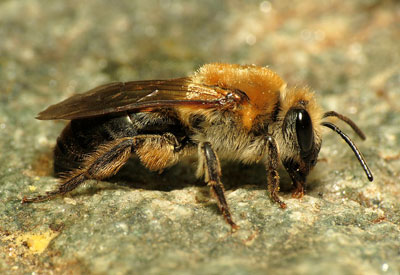
Comprising of over 1,300 species worldwide, the mining bee leads a solitary life, coming out of their burrow as adults for only 6-8 weeks in the spring. Their burrows help aerate the soil, and they are one of the most pacifistic types of bee out there.
As with other types of ground bee, the appearance of mining bees might be alarming, but only the females can sting – and even then, only if they feel seriously threatened.
Sweat Bees
One of the largest bee families out there, sweat bees tend to be dull or metallic black, but some species can be a vibrant metallic blue, green, or purple. They’re excellent pollinators, although they can prove a nuisance to some people due to their attraction to human sweat.
Bees vs. Wasps and Hornets
While very similar in appearance there are some important differences between bee species and their close cousins. The biggest giveaway to identify wasps and their subgroup hornets is their lack of a fuzzy coat. They also have two pairs of wings as opposed to the single pair of bees.
One important thing to note is that the stingers on bees are designed to defend against other bees, which is why they often break off in human skin. A piece of the abdomen also gets ripped of, resulting in the bee’s death.
Wasps and hornets, conversely, have more robust stingers designed to protect their hives from larger predators and can sting a human multiple times.
The Hornet
There is actually only one species of hornet in the US: the brown (or European) hornet. The bald-faced hornet also lives in the US, but is actually classified as a species of wasp.
Hornets build paper nests high above ground and are very aggressive when that nest is threatened. They do perform a service by hunting down other insects, but their aggressiveness and ability to damage your property make them highly undesirable.
The Wasp
Often sleek and aggressive, wasps aren’t something to mess with. That said, they can be pretty peaceful when not threatened, and hunt a lot of other pests.
The downside is that many species have a habit of building their homes in yours. The paper wasp and mud wasp are prime examples of this.
Make sure you don’t mistake the beneficial hover fly for a wasp. They have some visual similarities but hoverflies are completely safe and can’t sting or bite.
The Yellow Jacket
Perhaps the most notorious sibling of bees and wasps, the yellow jacket is highly aggressive in defending its nest. They can be useful for controlling other insect species, but aren’t a very welcome sight in your backyard.
Their defensive nature and ability to deliver multiple painful stings make them one of the least desirable type of stinging insect to have around. Note that in some countries, the yellow jacket is referred to as a wasp, although it’s technically neither a wasp or hornet.
Stinging Insect Threat/Benefit Chart
| Insect | Nest | Population | Benefits | Aggression Level |
|---|---|---|---|---|
| Africanized Bee | Hive | Up to 10k | More honey | Moderate to High |
| Bumble Bee | Empty burrows | Up to 400 | Vital pollinators | Very Low |
| Carpenter Bee | Rotting wood | Solitary | pollinators | Very Low |
| Honey Bee | Hive | Moderate | Pollination, honey, wax | Very Low |
| Hornet | Paper nest | Up to 10k | Hunts insects | High; (attacks bees) |
| Leafcutter Bee | Rotting wood | Solitary | Highly efficient pollinators | Very Low |
| Mason Bee | Cavities | Solitary | Efficient pollinators | Very Low |
| Mining Bee | Burrrow | Solitary | Pollinator | Very Low |
| Sweat Bee | Burrow | Solitary | Pollinator | Low |
| Wasp | Mud/paper nest | Varies | Pollinator; Hunts insects | Low/Mod; (attacks bees) |
| Yellow Jacket | Burrow | Solitary | Pollinator | High |
SHOULD You Get Rid of Bees?
This might seem like an odd question, but bees are far less dangerous than we’re taught and are vital to the environment. It might be a good idea to ask yourself a few important questions to discover if your bees really need to go or not.
Am I allergic?
This is the single most important question you need to ask. If you (or a family member) has a bee allergy, then removal or extermination might seem like your only options.
Note, however, that some species are actually hypoallergenic and a bee sting from these species won’t trigger a reaction. Thus, if you have a garden, you might want to consult with pest control experts first. They can help determine if the visiting bees pose any risk of causing an allergic reaction.
Are they in my living space?
A bee hive or nest located in the hollow spaces of your home, shed, or in your car can be the most problematic. These nests are the most likely to get you stung, and may even result in structural damage if not tended to. In such cases, removal or extermination is a priority.
Do I have a garden?
Bees are not only pollinators, but bees and wasps will help protect your plants from a lot of detrimental insects. Think of them as providing labor in exchange for basic room and board.
Parasitic wasps are especially important in pest control, Meanwhile, a honey bee colony means your plants will be getting the best pollination possible. Also, in the case of honey bees, you don’t want to destroy the colony. Instead, your local bee keepers will gladly relocate the entire hive, helping to preserve these important insects.
Do I have kids?
Having kids (of either the two- or four-legged variety) can change the rules. While they might not be in danger, nobody wants to be stung, and playing too close to a nest can result in just that. Removal is the best option in this case.
How to Get Rid of Bees
Due to our dependence on bees and their generally low aggression rates, handling a bee infestation can be a delicate matter. The easiest way to get rid of bees is to simply relocate or remove the bees nest. This can be a dangerous job, as you will be threatening the inhabitants of that nest, so always be prepared.
It’s extremely important that we remind you of how beneficial bees are to the environment. There are direct correlations between the decline in bees and many plant species. In addition, some bee species are protected by law due to the decline across all bee populations from pesticides.
Always check with your local and state codes, and hire a professional (preferably a beekeeper) if you think your bees might be on a protected list.
Preparation
If you want to know how to remove bees, then safety should always come first. The best time to perform the task is after dark while the bees are asleep. Heavy clothes, gloves, goggles, and other protective clothing are all good ways to prevent stings.
Bees in a Tree
Hives must be removed, as they contain eggs and larvae that will decay if you simply kill the colony. It’s always best to get a beekeeper if you think the hive belongs to a protected species.
To remove a hive yourself, you’ll first have to kill the occupants. This can be done at night by using a chemical spray designed for bees such as Raid. Try to use extreme caution, as even one worker bee can sound the alarm and send the whole colony after you.
Also, check during dusk and dawn after each spraying for signs of bee activity before attempting to remove the hive. Once there’s been no sign of activity for a couple of days, you can safely knock the hive down and dispose of it.
Bees in a Wall
This is probably a worst-case scenario if the problem involves wasps or honey bees. Wax-based nests are prone to melting, which can cause damage to your home. Likewise, wasps are more aggressive and may sting people who disturb the wall near the nest.
In the event the nesting location is exposed, you can spray it with pesticides at night. Check around dawn and dusk for activity and spray again the next night, if needed. When you’re sure the bees are all dead, remove the nest and make sure no wax is left behind.
An infestation buried deeper in the wall is more complicated, as plugging the entrance could result in them finding a way into your living space. Even worse, there’s a risk of carpenter bee damage to your home if not dealt with.
In this case, you’ll have to hire a pest management professional. They’ll not only safely remove the bees and their nest, but also assess any property damage. Bee keepers rarely provide this type of removal service due to the risks involved.
Ground Bees
You have to use as lot of caution when dealing with ground bees. This isn’t necessarily because they’re dangerous, but because you can end up killing everything around the nest if you use the wrong methods.
Destroying the nest has some limited benefit for solitary bees, but you may have to kill a hive. Adding diatomaceous earth to the entrance is one safe and effective method.
You can also use chemical sprays on the entrance, although these can also harm other species. Survivors will attempt to relocate their nest rather than rebuild.
Be very careful about filling the nest. Water will agitate the bees, while chemicals or gasoline can poison the ground or prove a health risk to your family. That said, you can simply pack the burrow entrance with good old dirt.
Large-scale ground bee infestations can be handled using a tarp. Simply cover the ground, weigh it down with some rocks, and the trapped bees will starve to death. It takes a few days, but won’t cause any permanent damage to your yard.
You can also trap single burrows by placing a clear glass jar over the entrance, cause them to slowly starve (unless they have additional entrances) and the sun will speed up dehydration.
Bees in Your Car
This can be one of the most difficult types of infestation to get rid of, because there are a lot of places in a car for the bees to hide. Running the car can agitate them into a frenzy, and bug sprays aren’t guaranteed to kill all the bees.
Call a beekeeper or exterminator immediately if you think you have a swarm nesting in your car and never try to remove or kill them yourself.
Additional Methods
Here are some additional methods for bee removal. These are pretty effective, and you probably won’t have to spend any money to do them, as they use common household items. Just remember, your mileage using these methods may vary.
Removal Using Bee Lures
When you want to get rid of a bee colony without killing any bees, it’s often as easy as feeding them. Grab some mangoes, ripe pears, or pineapple from the fridge and cut them into chunks. Put these into an open zip lock and sit it somewhere between 15 and 20 feet from the hive.
Bees love strong, sweet smells and will start visiting the bag frequently. After a couple days, move the bag a few feet further away so the bees will follow. Eventually, most bees will relocate their hive to be closer to the lure.
See Also: What Do Yellow Jackets Eat?
How to Kill Bees (Naturally)
Sometimes it may be necessary to kill the bees. If this is a legal alternative where you live, then try using these effective home remedies instead of a commercial pesticide.
Method #1
A teaspoon of vinegar or canola oil in a quart of water (especially if you add a bit of dish soap) can be a very effective point-defense spray, although you’ll have to shoot the bee, which might aggravate it.
Method #2
A simple homemade bee trap can be created by filling a basin with sugar water and a bit of dish soap. Place this where bees are known to gather and they’ll drown.
Method #3
Finally, you can get rid of bees with vinegar. Simply add an equal mix of water and vinegar into a spray bottle and spritz places the bees frequent for a plant-safe pesticide. You can also attack bees directly, but they’re likely to defend themselves.
Special note for ground bees: Ground bees are much easier to kill, as you can just pour boiling water into their burrow while they sleep, killing them instantly (be VERY careful doing this as it can harm nearby plants). Diatomaceous earth and borax are both good choices to kill bees entering or exiting their burrow.
How to Keep Bees Away
Once you’re rid of bees, you don’t want them coming back. The following methods not only keep bees from returning, but may also repel other critters in the process.
Citronella
The smell of citronella is pleasant to humans, but all sorts of insects hate it – including bees. Sticking some tiki torches with citronella candles on them near a nest is sometimes enough to actually make the bees move house. Burning citronella around the yard will, at the least, keep bees from visiting those areas.
Cucumber Peels
A lot of bugs, including bees, hate the smell of cucumber peels. Scattering these around the yard will keep bees from wanting to visit. As an added bonus, the peels degrade into some excellent compost.
Garlic
While garlic is highly beneficial to humans, it’s not so great for a host of other critters. Just sprinkle some garlic powder on or around plants and other places the bees like to congregate and the smell will help keep them away.
This is also a natural bee killer if they come in contact with the powder, but be warned it can also be bad for cats and dogs when ingested.
You can also steep some fresh garlic cloves in water overnight to create an effective garlic spray. Add a couple drops of Dawn dish soap so it’ll stick to surfaces longer.
Hiring a Professional
Due to the decline in bee populations universally, as well as the environmental significance of bees and wasps, the best way to remove any bee colony will always be to hire a professional.
There are two types you can hire, each with their own pros and cons. By identifying the species before placing calls, there’s a much better chance of getting a good price for the removal service.
Beekeepers
One of the best solutions is to simply call a local beekeeper. Not only are they experienced in handling bees, they’ll also often remove honey bees for free (and give them a new home in the process).
The big downside is that they won’t help with all species of bees and wasps, and any cleanup or repairs will be your own responsibility.
Watching a beekeeper at work is something of a treat. They lure the entire colony into a box hive, which then goes to a new home. Very few beekeepers will remove bees from a wall cavity or crawl spaces, and many will suggest extermination in such cases, regardless of the species.
One nice thing about hiring a beekeeper (besides doing your part for the environment) is that you probably live near one. Honeybee Swarm Removal is a national database of beekeepers who are willing to adopt your fluffy yellow invaders.
Hiring a local keeper means you can not only feel good about saving the bees, but you can enjoy their honey by purchasing from that apiary.
Exterminators
Exterminators are a good choice when you know there’ll be some follow-up work and the bees you’re dealing with aren’t protected. They use chemicals to kill the entire colony, then destroy the nest and seal off any access points to prevent another infestation down the road.
Pricing
Beekeepers often do the job at no cost, since they’re gaining a valuable commodity. Unfortunately, wasps and colonies that have been exposed to pesticides are less useful and will include a removal fee.
Meanwhile, exterminators will always charge, but perform a far wider range of extractions. Try to identify the kind of bee or wasp first, then call an exterminator only if nearby beekeepers won’t do the job.
Comparing Costs
| Task | Beekeeper | Exterminator |
|---|---|---|
| Concealed Hive | $100-700 | $150-1,400 |
| Exposed Nest Removal | $75-200 | $100-250 |
| Honey Bee Removal | Free (if healthy) | (Regular Price) |
| Repairs (if needed) | (Does not Repair) | $300-900 |
| Wasp Removal | (Does not Remove) | $85-250 |
For additional pricing info, including a more comprehensive fee breakdown, check out Cost Helper.
Some Final Thoughts
Obviously, we’ve only just scratched the surface when it comes to bee removal. For example, there are many natural bee repellents that might work on some species but not others. There are also a lot of differences in how to deal with social insects vs solitary insects.
This guide is meant to be a primer on the topic, and can help you remove bees without suffering a single bee sting. However, if you want more techniques, we strongly suggest you check out our guides on specific types of bees and wasps.
And remember, even the most docile bee will attack if threatened, so don’t be afraid to call a local pest control service if you aren’t sure what kind of bee you’re dealing with.
- How to Get Rid of Hawks - March 8, 2024
- How to Get Rid of Pill Bugs (Rolly Pollies) - March 1, 2024
- How to Get Rid of Groundhogs (Woodchucks) - February 5, 2024

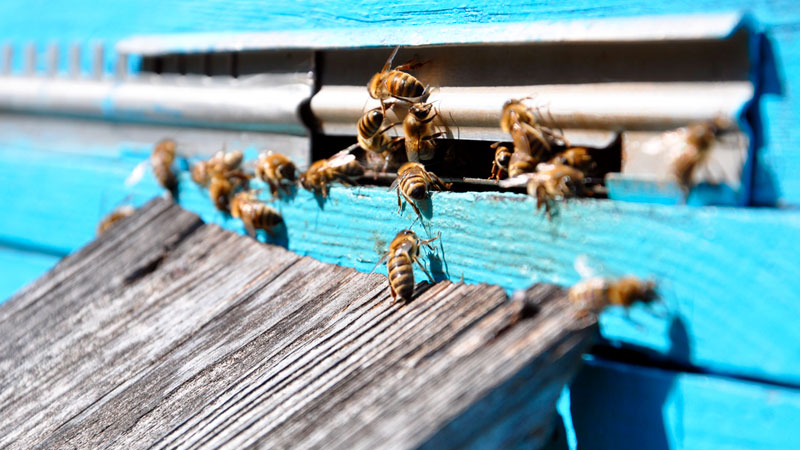
 Just tell me how to get rid of ’em.
Just tell me how to get rid of ’em.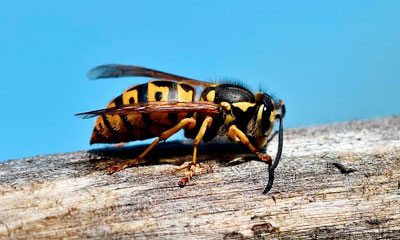
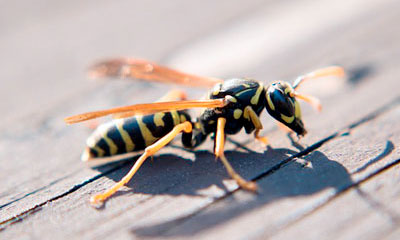

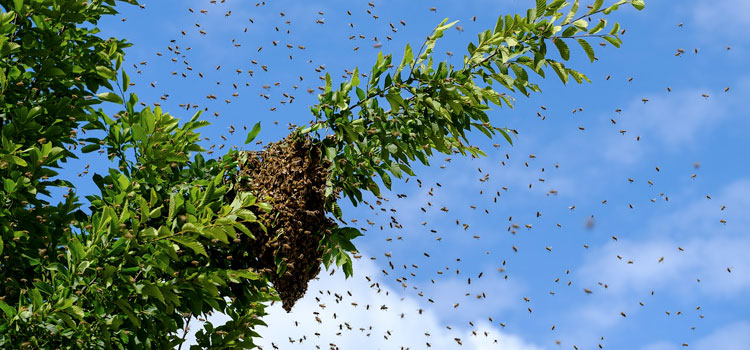
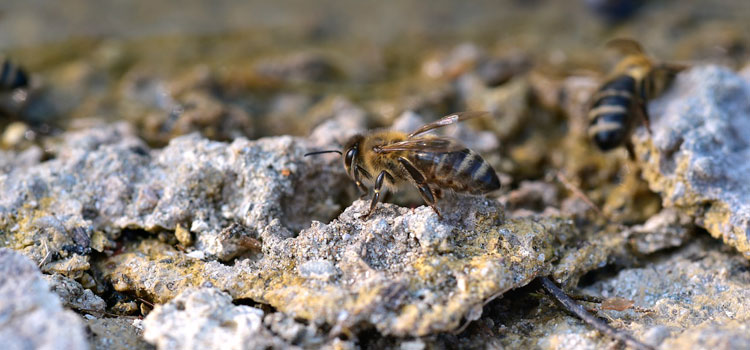
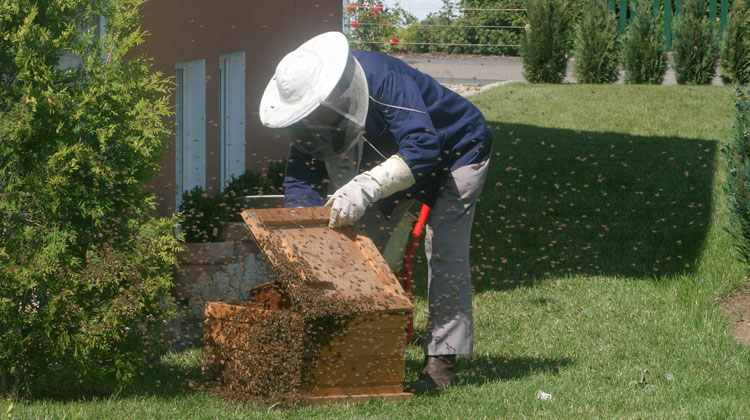
nest of angry bees in my passenger side door panels of my truck.. due to mechanical issues..its been sitting for 6 months.. on disability ssd and need to have my truck ready to go… mechanics are almost finished,, but now I have a bee population and am allergic.. Help!!!!
Bee issues can be tough to handle. It’s much different than a typical pest control call. There are several steps that must be taken to ensure you rid of the problem right away.